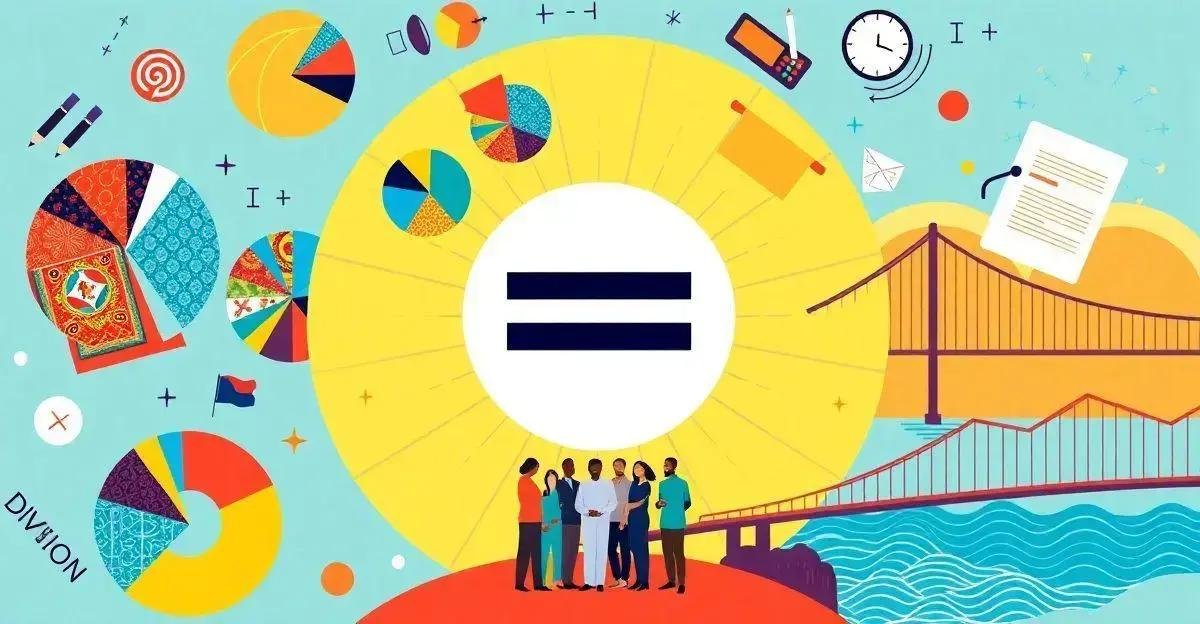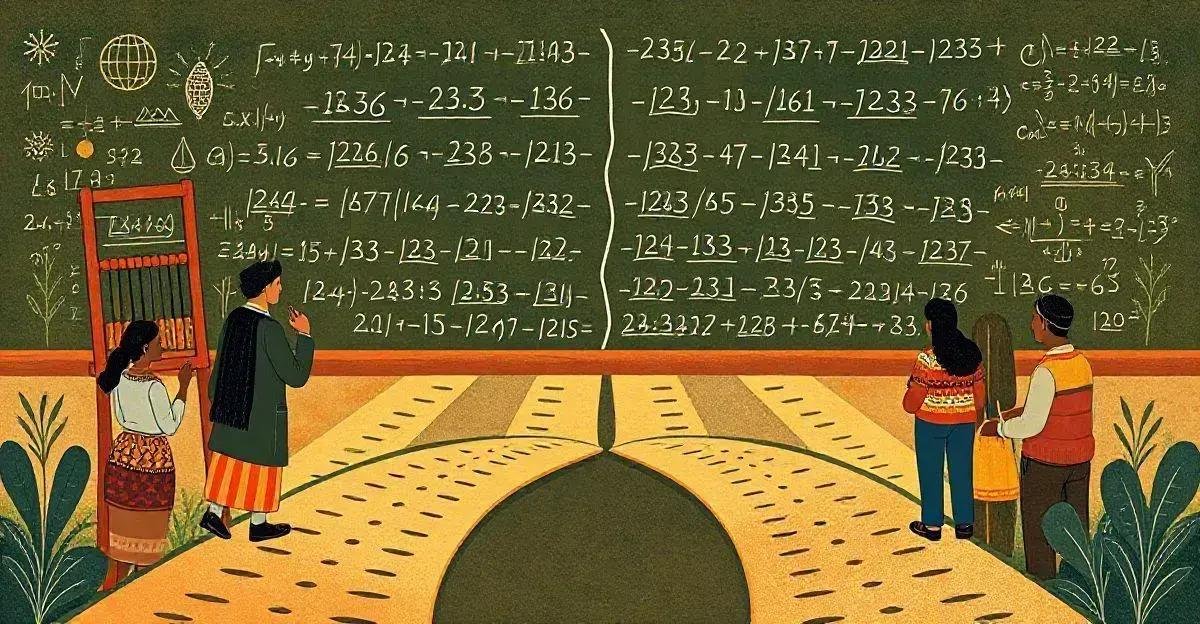Division is a fundamental concept in mathematics that helps us understand how to share a certain quantity or amount into equal parts.
Whether you’re a student or simply trying to improve your basic math skills, mastering the art of division is crucial.
In this blog post, we’ll delve into the world of division, exploring its various types, real-life applications, and even its cultural significance.
So, let’s get started and uncover the secrets of division!
What is Division?
Division is a fundamental concept in mathematics that involves sharing a quantity into equal parts or groups. It is the opposite of multiplication, where a number is being repeated a certain number of times. Division can be written as a fraction, with the dividend (the number being divided) as the numerator and the divisor (the number by which we are dividing) as the denominator. For example, 12 ÷ 3 = 4, where 12 is the dividend, 3 is the divisor, and 4 is the quotient.
There are different types of division, including whole division, decimal division, and fractional division. Whole division involves dividing a whole number by another whole number, while decimal division involves dividing a decimal number by another decimal number. Fractional division involves dividing a number that contains fractions by another number. Each type of division has its own set of rules and procedures.
Division has many real-life applications, such as sharing food or toys among a group of people, measuring ingredients for a recipe, or calculating the cost of goods sold. It is also used in science and technology, such as calculating the area of a room, the volume of a container, or the speed of an object. Division is an essential skill for everyday life, as it helps us make sense of the world around us.
Division is an essential concept in many cultures around the world. In some cultures, division is used to calculate the amount of food or resources that should be shared among a group of people. In other cultures, division is used to measure the size of a piece of land or the amount of time it takes to complete a task. Understanding division is important for cultural and historical context, as it helps us understand how different societies have developed and evolved over time.
To master division, it is essential to practice regularly and consistently. Start with simple division problems and gradually move on to more complex ones. Use visual aids such as diagrams or graphs to help you understand the concept of division. Also, make sure to check your answers regularly to ensure that you are accurate. With practice and patience, you will become more confident and proficient in your ability to divide numbers.
Types of Division

Division is a fundamental concept in mathematics that involves sharing a quantity into equal parts or groups. It is the opposite of multiplication, where a number is being repeated a certain number of times. Division can be written as a fraction, with the dividend (the number being divided) as the numerator and the divisor (the number by which we are dividing) as the denominator. For example, 12 ÷ 3 = 4, where 12 is the dividend, 3 is the divisor, and 4 is the quotient.
There are different types of division, including whole division, decimal division, and fractional division. Whole division involves dividing a whole number by another whole number, while decimal division involves dividing a decimal number by another decimal number. Fractional division involves dividing a number that contains fractions by another number. Each type of division has its own set of rules and procedures.
Division has many real-life applications, such as sharing food or toys among a group of people, measuring ingredients for a recipe, or calculating the cost of goods sold. It is also used in science and technology, such as calculating the area of a room, the volume of a container, or the speed of an object. Division is an essential skill for everyday life, as it helps us make sense of the world around us.
Division is an essential concept in many cultures around the world. In some cultures, division is used to calculate the amount of food or resources that should be shared among a group of people. In other cultures, division is used to measure the size of a piece of land or the amount of time it takes to complete a task. Understanding division is important for cultural and historical context, as it helps us understand how different societies have developed and evolved over time.
To master division, it is essential to practice regularly and consistently. Start with simple division problems and gradually move on to more complex ones. Use visual aids such as diagrams or graphs to help you understand the concept of division. Also, make sure to check your answers regularly to ensure that you are accurate. With practice and patience, you will become more confident and proficient in your ability to divide numbers.
Conclusion
Real-Life Applications
Division is used in various real-life scenarios, such as measuring ingredients for a recipe, calculating the cost of goods sold, and sharing resources among a group of people.
It is also used in science and technology, like calculating the area of a room, measuring the volume of a container, and calculating the speed of an object.
Moreover, division is used in finance to calculate interest rates, investment returns, and credit scores.
In addition, it is used in construction to calculate materials needed for a project, timber for a building, and distance between two points.
These are just a few examples of how division is used in real-life applications.
Division in Different Cultures

Division is a fundamental concept that is used in various ways across different cultures. In some cultures, division is used to calculate the amount of food or resources that should be shared among a group of people. For example, in many African cultures, division is used to distribute food among the community.
In other cultures, division is used to measure the size of a piece of land or the amount of time it takes to complete a task. For instance, in many Asian cultures, division is used to calculate the time it takes to complete a task or the area of a piece of land.
Understanding Division in Different Cultures
Understanding division in different cultures can help us appreciate the diversity of mathematical concepts and how they are used in everyday life.
Tips for Mastering Division
To master division, it is essential to practice regularly and consistently. Start with simple division problems and gradually move on to more complex ones.
Use visual aids such as diagrams or graphs to help you understand the concept of division. Also, make sure to check your answers regularly to ensure that you are accurate.
Additionally, you can use online resources such as calculators or apps to help you with your division problems.
Finally, try to apply division to real-life situations to make it more meaningful and interesting.
Conclusion

In conclusion, division is a fundamental concept in mathematics that has various applications in real-life scenarios.
Understanding the different types of division, its applications, and how it is used in different cultures can help us appreciate its importance.
To master division, it is essential to practice regularly and consistently.
By following the tips provided, you can improve your understanding and application of division.
Remember, division is a powerful tool that can help you solve problems and make informed decisions in your personal and professional life.
FAQ – Frequently Asked Questions about Division
What is division?
Division is a fundamental concept in mathematics that involves sharing a quantity into equal parts or groups.
What are the different types of division?
There are different types of division, including whole division, decimal division, and fractional division.
How is division used in real-life applications?
Division is used in various real-life scenarios, such as measuring ingredients for a recipe, calculating the cost of goods sold, and sharing resources among a group of people.
How is division used in different cultures?
Division is used in different cultures to calculate the amount of food or resources that should be shared among a group of people, or to measure the size of a piece of land or the amount of time it takes to complete a task.
What are some tips for mastering division?
To master division, it is essential to practice regularly and consistently. Start with simple division problems and gradually move on to more complex ones.
What is the conclusion about division?
In conclusion, division is a fundamental concept in mathematics that has various applications in real-life scenarios. Understanding the different types of division, its applications, and how it is used in different cultures can help us appreciate its importance.




